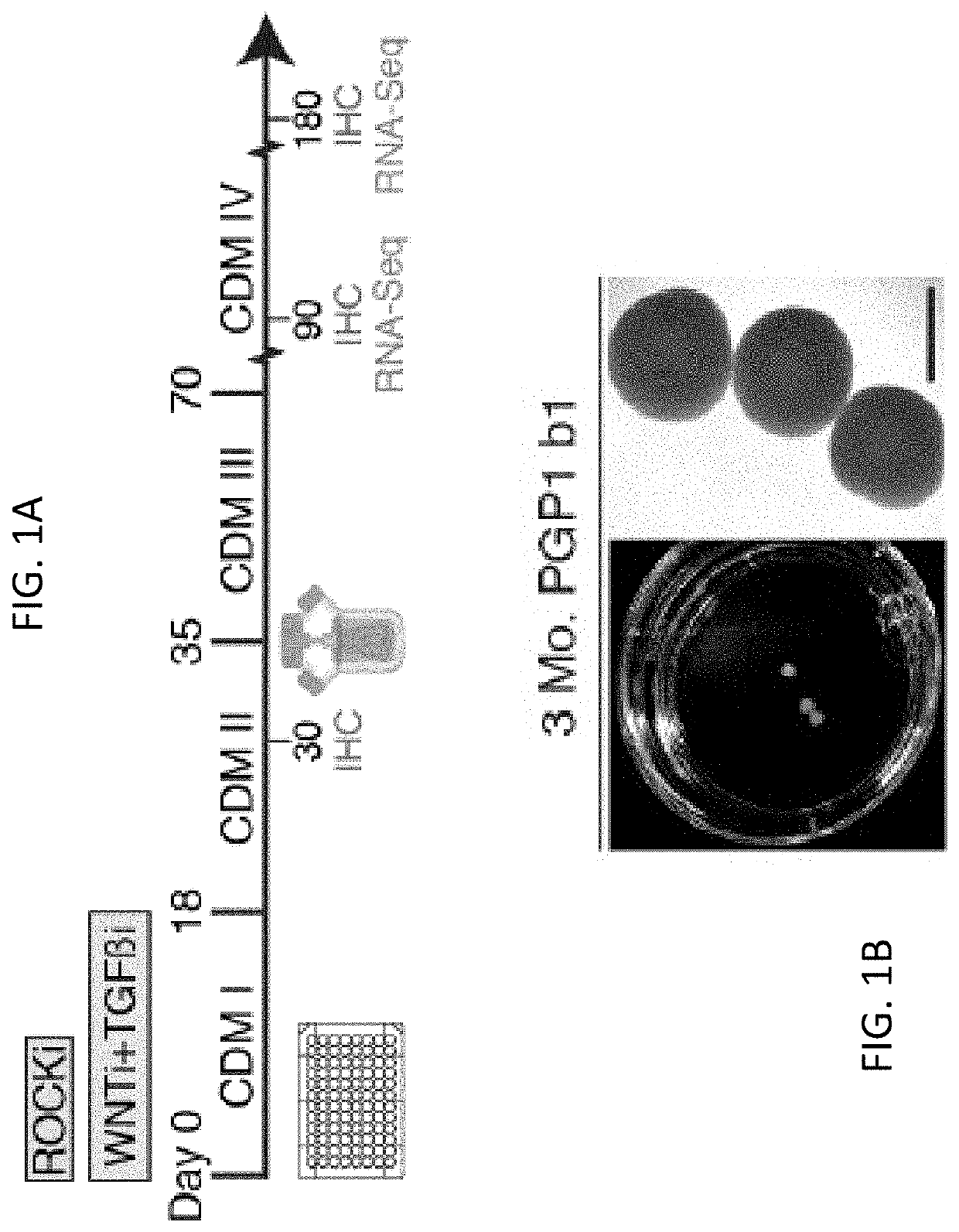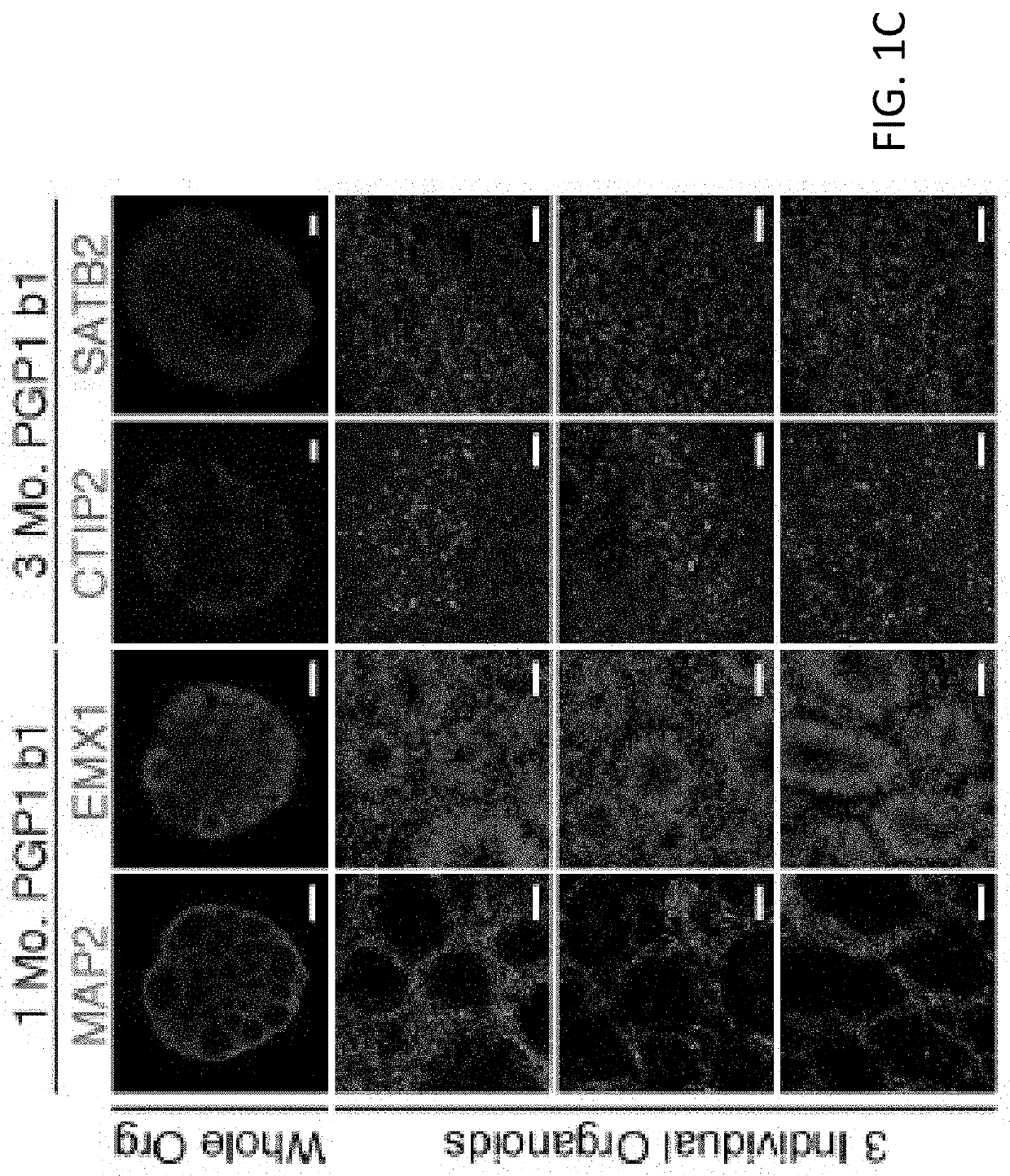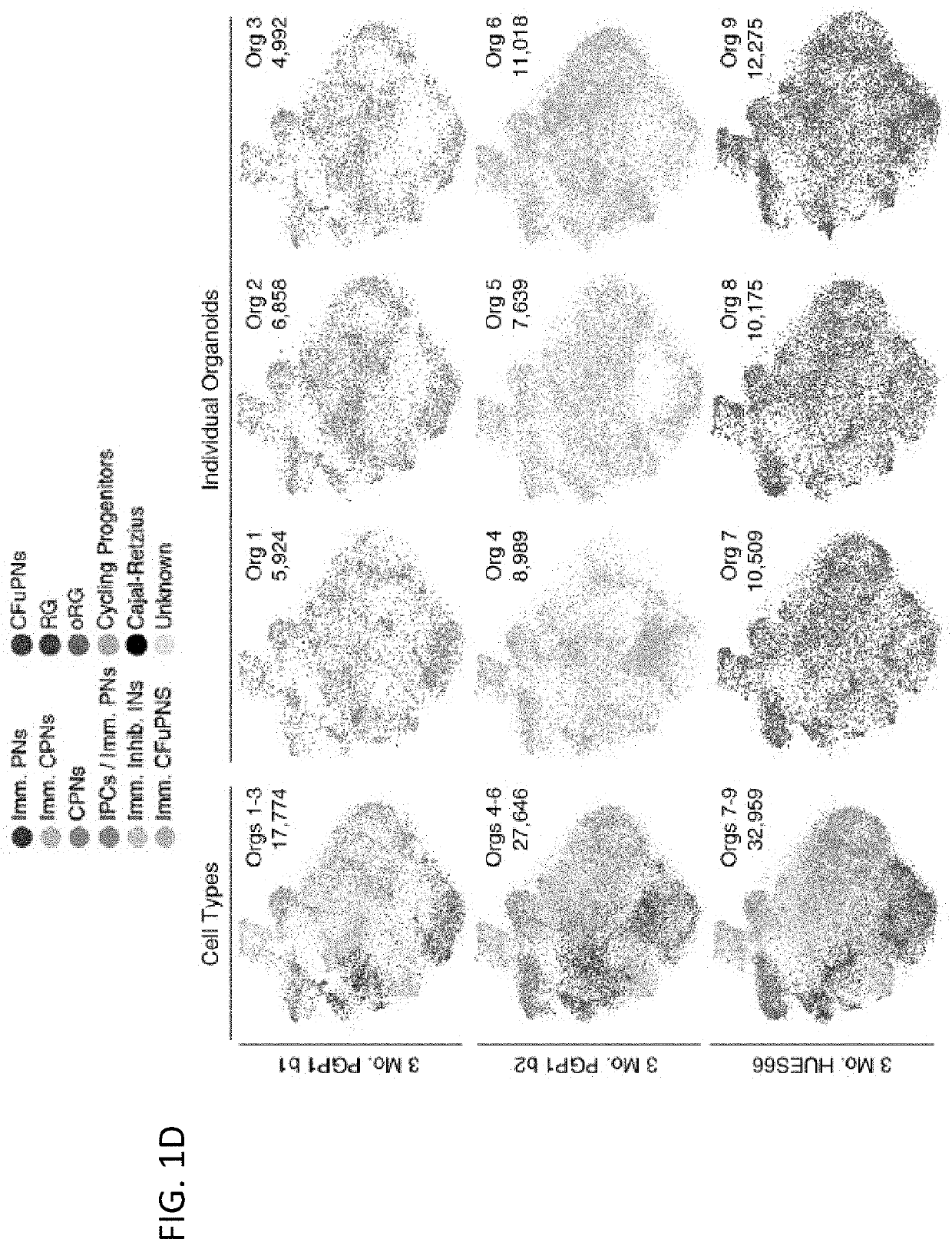Reproducible brain organoids and methods of making
- Summary
- Abstract
- Description
- Claims
- Application Information
AI Technical Summary
Benefits of technology
Problems solved by technology
Method used
Image
Examples
examples
[0121]Four distinct protocols for producing 3D brain organoids and spheroids: self-patterned whole-brain organoids3; patterned dorsal forebrain organoids (modified from5); and patterned dorsal and ventral spheroids (modified from15) were established. Each protocol was adapted to growth in spinner-flask bioreactors over durations of at least 6 months, to achieve advanced maturation (FIG. 5A; see Methods for details on protocol modifications).
[0122]To standardize and compare these four models, cultures of each were derived from the same hiPSC line, PGP116. Substantial differences in overall external morphology and size across models (FIG. 5A) were observed. Self-patterned whole-brain organoids showed the greatest variability in shape. The two patterned spheroid models showed more consistent shape but remained substantially smaller. The dorsally patterned organoid model, however, showed desirable features of large size and consistent overall shape (FIGS. 1A-1B and FIG. 5A). For this mo...
PUM
 Login to View More
Login to View More Abstract
Description
Claims
Application Information
 Login to View More
Login to View More - R&D
- Intellectual Property
- Life Sciences
- Materials
- Tech Scout
- Unparalleled Data Quality
- Higher Quality Content
- 60% Fewer Hallucinations
Browse by: Latest US Patents, China's latest patents, Technical Efficacy Thesaurus, Application Domain, Technology Topic, Popular Technical Reports.
© 2025 PatSnap. All rights reserved.Legal|Privacy policy|Modern Slavery Act Transparency Statement|Sitemap|About US| Contact US: help@patsnap.com



